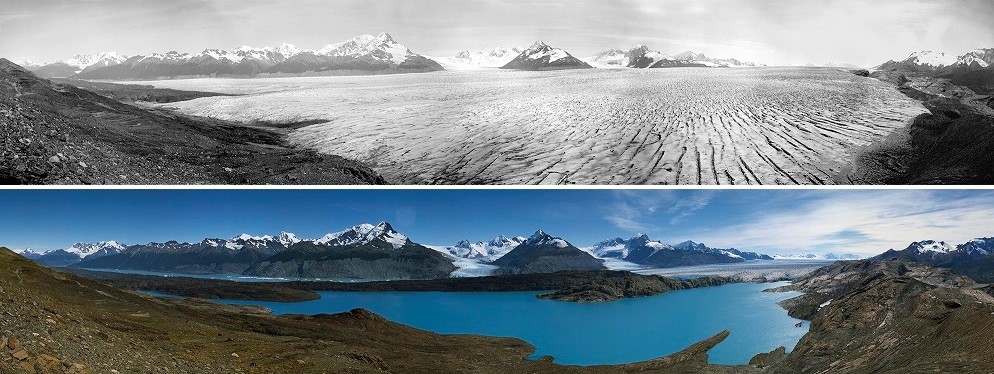by Dario Orlandi
_
In 1889 Vittorio Sella took his first steps with a team of 10 porters in the valleys of Svanezia, in the Caucasus. It carried a heavy photographic kit made of glass plates, wooden stands, large optical benches which he needed to take the first photos of a remote and almost unknown mountain environment.
In the early 2000s Fabiano Ventura is an established outdoor and landscape photographer: he collaborates with trade magazines, is a talented mountaineer and thanks to his familiarity with the mountains he accompanies top climbers in their adventures. The choice to dedicate himself to environment and landscape photography in his mind is not tied solely to the passion for the outdoors and to the majesty of the mountains : it also reveals the centrality of the environmental theme.
A doubt, however, torments the photographer: can the simple celebration of natural beauty communicate the importance of protecting the environment? Or is it necessary to address the environmental issue directly, showing that even the mountains – apparently unperturbed giants – are instead fragile ecosystems? How to make mountains an icon of the environmental issue in general?

In 2004 Fabiano is leaving as an official photographer for the expedition “K2 2004 – 50 years later”, organized for the fiftieth anniversary of the Italian conquest of K2. Studying the scientific findings and historical images of the largest glaciers in the world, he realizes how much the glacial masses have withdrawn within a very short time.
At this point, an idea begins to make its way into the photographer’s mind: to retrace the footsteps of the great explorers who, between the end of the nineteenth century and the middle of the twentieth century, had first travelled and photographed the most important glaciers on the planet; to identify with a meticulous scientific and photographic research the exact places from which the photos of the time had been taken (there were certainly no GPS, then … and who knows how the territory could have changed over a hundred years!); to re-photograph the same scenario with techniques as similar as possible to the historical ones in order to create new images, perfectly superimposable to the old ones, capable of demonstrating – through comparison – the variations of the glacial masses over a hundred years.
To return, in short, to the traces of glaciers, to produce a visible and immediate testimony of climate change, of which glaciers are monumental and unequivocal witnesses.

Gradually the dream of a lifetime of a photographic project begins to become more and more concrete, going through the many difficulties of a path of such dimensions: sourcing the funds, finding historical material, planning shipments, organizing communication and finally, creating an international Scientific Committee and a team of glaciologists and climate experts to accompany the expeditions and produce original scientific measurements to be used alongside the visual material.
Since then the project has explored the mountains of the Karakorum (2009), the Caucasus (2011), the Alaska (2013), the Andes (2016), the Himalayas (2018) and will end with the Alps in the summer of 2020 , becoming – once finished – the largest comparative photographic archive on the subject of glacier retreat.
In over 10 years of development, On the trail of glaciers has obtained the patronage and support of important Italian and international public and private institutions committed to the issue of climate change.

The photographs of the project travel the world thanks to a touring exhibition that displays over one hundred large format comparative images, multimedia itinerary, interactive installations and vintage materials; the images integrate communication initiatives on the theme of the environment and are used for educational purposes, conferences and editorial projects with an environmental theme.
The immediacy of the photographic images and the strength of the comparison make the project In the footsteps of the glaciers a clear example of how, in the era of global communication, images can be a precious resource in support of the environmental theme.
July 9, 2019




